Chapter 11 Leveraging Data for Better Decision Making in Ecommerce
Discover how to use data insights to make smarter decisions in dropshipping. Learn to track key metrics, optimize strategies, and drive long-term growth.

Introduction – The Power of Data in Dropshipping
Data can help your dropshipping business grow. By looking at how customers shop, what sells well, and how much stock you need, you can make better choices. Using data tools can help you improve your business and make more money.
You can analyze your online store’s performance to find ways to improve prices, marketing, and inventory. By understanding trends, you can stay ahead of competitors. Flxpoint is a tool that can help you collect and analyze data on your products, suppliers, and stock levels. This information can help you make smarter decisions to run your dropshipping business more efficiently.
Understanding Data-Driven Decision-Making in Dropshipping
Data-driven decision-making means using data to make smart choices for your business. For dropshipping, this involves using real-time data to work more efficiently, avoid mistakes, and make more money.
By analyzing data like sales numbers and inventory levels, dropshippers can make better decisions about what products to sell, how much to charge, and how to fulfill orders. Data also helps businesses run smoother. It can spot trends, find areas where things aren’t working well, and prevent problems like running out of stock or overselling. Tools like Flxpoint reporting help dropshippers keep track of important numbers and make changes as needed.
In a highly competitive ecommerce landscape, using data gives businesses a major edge. It allows them to respond faster to market changes and customer demands, ensuring they remain relevant and profitable. By relying on data, dropshipping businesses can make informed choices that lead to sustainable growth and success.
Key Performance Indicators (KPIs) to Monitor in Dropshipping
Monitoring Key Performance Indicators (KPIs) is essential for evaluating dropshipping business performance because KPIs provide clear, measurable data on critical areas like sales, inventory, and customer behavior. By tracking these metrics, you can identify trends, spot inefficiencies, and make data-driven decisions that improve profitability and streamline operations.
Using data analytics and tools like Flxpoint reporting, you can access real-time business intelligence that highlights key metrics like sales growth and inventory turnover. This allows you to adjust strategies quickly and optimize overall performance. Effective KPI monitoring ensures your ecommerce KPIs and inventory data align with business goals.
Order Fulfillment Time
How quickly you can ship orders is really important in dropshipping. Tracking this time helps you see how well your business is running. If orders take too long, customers get upset, leave bad reviews, and might return items. By using tools like Flxpoint, you can find problems and make things faster. This makes customers happy and more likely to shop with you again.
How Reducing Order Fulfillment Time Can Improve Customer Satisfaction.
- Faster delivery boosts customer confidence and loyalty.
- Quick fulfillment reduces the risk of order cancellations.
- Minimizes customer complaints about shipping delays.
- Improves the overall shopping experience, leading to positive reviews.
- Increases repeat business, as customers are more likely to shop again when they experience fast service.
Customer Acquisition Cost (CAC)
Customer Acquisition Cost (CAC) is the total cost a business spends to acquire a new customer. To calculate CAC, divide the total marketing and sales expenses by the number of new customers gained during a specific period. For example, if you spent $1,000 on marketing and gained 100 customers, your CAC would be $10. Tracking CAC using data analytics and tools like Flxpoint reporting ensures accurate results, helping businesses measure the true cost of acquiring each customer.
Why Knowing CAC is Essential for Budget Planning and Profitability?
- Helps allocate marketing budgets effectively.
- Enables businesses to determine if acquisition costs are too high.
- Provides insight into the profitability of each sale.
- Helps balance customer acquisition and retention strategies.
- Guides adjustments in pricing and marketing to ensure sustainable growth.
Average Order Value (AOV)
Tracking Average Order Value (AOV) is like understanding how much money your customers usually spend when they shop with you. By keeping an eye on AOV, you can learn more about what your customers like to buy.
A higher AOV means customers are buying more or choosing more expensive items. This information can help you make better decisions about your business, like pricing your products and figuring out what marketing strategies work best.
Tools like Flxpoint reporting can help you track AOV and other important numbers. This can lead to better profits and overall business growth.
Strategies to Increase AOV for Higher Profitability.
- Offer bundle deals or discounts on multiple products.
- Upsell complementary items during checkout.
- Implement free shipping thresholds to encourage larger purchases.
- Highlight premium versions of products.
- Use targeted promotions based on customer behavior and inventory data.
Gross Profit Margin
Gross profit margin is a key metric for evaluating the profitability of your dropshipping business. It measures the difference between revenue and the cost of goods sold (COGS). Monitoring gross profit margin ensures you are pricing products correctly and covering expenses. Data analytics and business intelligence tools, like Flxpoint reporting, help track this margin in real time, allowing you to make quick adjustments. By keeping a close eye on this KPI, you ensure long-term profitability and sustainable growth.
How Fluctuating Margins Can Affect Long-Term Business Health.
- Reduced Profitability – Decreasing margins can shrink profits, making it harder to grow.
- Pricing Adjustments – Margins may indicate when prices need to be raised or negotiated with suppliers.
- Cash Flow Problems – Lower margins can strain cash flow, affecting operations.
- Supplier Issues – Fluctuations may signal inefficiencies with suppliers or rising costs.
- Impact on Investment – Inconsistent margins make future planning and investment decisions difficult.
Inventory Turnover Rate
Why it’s Important to Monitor How Fast Products are Selling.
The inventory turnover rate shows how fast you sell and replace products. For a dropshipping business, it is important to know what products are popular and to make sure they’re selling well. Using tools like Flxpoint, you can see in real-time which products are doing well and which aren’t. This helps you decide if you need to restock, offer discounts, or stop selling slow-moving products. A high turnover rate means your products are in demand and you’re offering the right things. This keeps your business flexible and able to compete.
Impact of High or Low Turnover Rates on Dropshipping Businesses.
High Turnover Rate:
- Improved Cash Flow – Selling products quickly frees up cash for new inventory and growth opportunities.
- Customer Satisfaction – Fast-moving products are likely to be in demand, leading to better customer experiences.
- Reduced Holding Costs – Lower storage costs as inventory doesn’t sit idle.
Low Turnover Rate:
- Tied-Up Capital – Slow-moving inventory ties up capital, limiting investment in new products.
- Potential Losses – Products may become outdated or unsellable, leading to markdowns or losses.
- Supplier Strain – Poor turnover may indicate issues with the supplier or market fit, requiring adjustment to your strategy.
Return Rate
Return rates are a critical ecommerce KPI that indicates both customer satisfaction and product quality. High return rates can signal issues with product descriptions, quality, or customer expectations. By using data analytics and Flxpoint reporting, you can track these rates closely and identify patterns in returns. Monitoring this data helps you take proactive steps to address product issues, improve descriptions, or provide better customer support, all of which enhance customer satisfaction and loyalty.
Strategies to Reduce Returns and Improve the Bottom Line.
- Accurate Product Descriptions – Ensure detailed and honest product listings to avoid misleading customers.
- Quality Control – Implement checks with suppliers to ensure consistent product quality.
- Clear Return Policies – Create transparent return policies to set proper customer expectations.
- Customer Feedback – Use reviews and feedback to identify recurring issues and fix them.
- Inventory Data – Align inventory management to reduce mistakes and mismatched orders.
The Importance of Tracking Supplier Performance
In simple terms, when you sell products without storing them yourself (dropshipping), how well your suppliers work is very important. If they don’t send products on time or make mistakes, it can hurt your business. Good suppliers help you keep your customers happy by sending products quickly and correctly. This leads to positive reviews and more sales. Using tools like Flxpoint reporting can help you keep track of how well your suppliers are doing. This helps you choose the best suppliers, save money, and avoid problems like running out of stock.
KPIs for Measuring Supplier Performance.
- On-time Delivery – Measures how often suppliers meet agreed-upon delivery times. Late deliveries can lead to canceled orders and lost customers.
- Order Accuracy – Tracks the number of correctly fulfilled orders. Mistakes in product shipment can cause returns, refunds, and additional costs.
- Product Quality – Monitors the quality of products delivered. Poor-quality products hurt customer satisfaction and increase return rates.
How Poor Supplier Performance Affects Overall Business Performance.
- Increased Customer Complaints – Delays, wrong orders, or low-quality products lead to dissatisfied customers and negative reviews.
- Higher Operational Costs – More time and money are spent fixing issues caused by unreliable suppliers, such as returns or additional shipments.
- Damaged Brand Reputation – Consistent poor performance from suppliers can result in a loss of trust, impacting customer loyalty.
- Inventory Discrepancies – Inaccurate data from suppliers can lead to stockouts or overselling, disrupting inventory data and availability.
- Revenue Loss – Slow or incorrect fulfillment can cause customers to cancel orders, leading to lost sales and decreased revenue.
Leveraging Data to Improve Profitability and Efficiency
Analyzing data through data analytics tools provides actionable insights that help optimize various aspects of your dropshipping business. For inventory management, tracking inventory data allows you to ensure product availability and avoid stockouts or overstocking, which improves efficiency. In terms of pricing, leveraging business intelligence helps you adjust prices dynamically based on demand, competitor pricing, and other market conditions, allowing you to remain competitive while maximizing profits. Additionally, Flxpoint reporting tools can track customer behavior and purchase patterns, helping you design personalized strategies that improve customer retention by delivering a better shopping experience and fostering brand loyalty.
Optimizing Supply Chain and Order Fulfillment Processes.
- Supplier Performance – Use data to evaluate supplier efficiency, shipping times, and reliability.
- Order Routing – Analyze order data to streamline fulfillment, reducing errors and delays.
- Demand Forecasting – Data helps predict demand trends, enabling better stock planning.
- Automation Opportunities – Identify repetitive tasks in the fulfillment process that can be automated for better efficiency.
Reducing Operational Costs and Improving Profit Margins.
- Cost Reduction – Data can pinpoint areas where expenses are unnecessarily high, allowing cost-cutting measures.
- Optimized Shipping Routes – Analyze fulfillment and shipping data to find the most cost-effective shipping methods.
- Labor Efficiency – Data insights help allocate labor more effectively, reducing operational inefficiencies.
- Supplier Negotiation – Use performance data to renegotiate better terms with suppliers, improving profit margins.
- Price Optimization – Data allows for dynamic pricing strategies, ensuring maximum profitability.
How Flxpoint’s Analytics and Reporting Features Help
Performance Tracking
Flxpoint’s data analytics and reporting features allow businesses to monitor sales, order fulfillment, and profitability in real-time. By integrating with multiple suppliers and platforms, Flxpoint automates the flow of inventory data and transactions, ensuring accurate tracking of ecommerce KPIs like sales performance and order completion rates. This business intelligence capability helps businesses identify areas for improvement, optimize pricing, and make data-driven decisions to improve profitability.
How to Use Flxpoint’s Dashboard to Monitor Key Metrics at a Glance.
- Sales Performance – Track daily, weekly, or monthly sales data.
- Order Fulfillment Rates – Monitor completed, pending, and delayed orders.
- Profitability Insights – View profit margins for individual products.
- Inventory Levels – Quickly check stock availability across all sales channels.
- Customizable Reports – Generate and export reports based on selected KPIs for deeper analysis.
Supplier Efficiency Reporting
Flxpoint helps you keep track of how well your suppliers are doing. With easy-to-understand reports, you can see if they’re delivering on time, sending the right products, and having what you need in stock.
If there are any problems, you can quickly fix them. This helps you choose the best suppliers and make sure your business runs smoothly. By working with reliable suppliers, you can improve your inventory and your overall business.
Profitability Reports
Flxpoint’s smart tools help you understand your dropshipping business better. These tools use data to analyze your products and sales. They show you which products are making money and which aren’t. By looking at key numbers like profit margins and total sales, you can spot trends and make smart choices.
You can use this information to pick the best products to sell, stop selling those that aren’t working, and adjust prices based on what’s happening. For example, if a product’s profit margin drops, Flxpoint can tell you to raise the price to keep making money. Using these tools wisely can help you choose the right products and make the most profit.
Inventory & Stock Reports
Flxpoint provides robust analytics and reporting features that allow businesses to monitor stock levels in real time. With advanced data analytics and business intelligence tools, users can easily access up-to-date inventory data. This real-time visibility helps dropshipping businesses make informed decisions about restocking and inventory management. Flxpoint’s dashboard displays crucial ecommerce KPIs, enabling users to track stock levels, sales trends, and supplier performance effortlessly. By staying on top of inventory status, businesses can react quickly to changes in demand and adjust their operations accordingly.
Avoiding Stockouts and Overstocking by Using Accurate Inventory Data.
- Real-Time Updates – Instant notifications when stock levels reach a certain threshold.
- Data-Driven Decisions – Use historical sales data to forecast future inventory needs.
- Supplier Performance Tracking – Evaluate supplier reliability to minimize delays.
- Automated Reordering – Set reorder points to maintain optimal stock levels.
- Cost Control – Prevent unnecessary expenses associated with excess inventory.
Conclusion – Turning Data Into Actionable Insights
Data-driven decision-making is crucial for success in dropshipping. By leveraging data analytics and business intelligence, businesses can make informed choices that lead to better outcomes. Understanding ecommerce KPIs helps identify trends and areas for improvement, ensuring that strategies are effective and aligned with goals.
Utilizing tools like Flxpoint reporting empowers businesses to track and analyze performance metrics. These insights enable you to optimize operations and make necessary adjustments. Monitoring inventory data helps manage stock levels and maximize profit margins.
In summary, leveraging data effectively can significantly drive business growth and profitability. Embrace data-driven strategies, and your dropshipping business can thrive in a competitive landscape. By turning data into actionable insights, you position yourself for long-term success and sustainability.
Guide Chapters
- Chapter 1: Introduction to Modern Dropshipping
- Chapter 2: Forming Your Dropship Business
- Chapter 3: What to Sell Online - How to Find the Right Products
- Chapter 4: Product Sourcing and Supplier Integration
- Chapter 5: Inventory Management for Dropshipping
- Chapter 6: Dropship Pricing Strategies
- Chapter 7: Fulfillment and Automation for Scaling
- Chapter 8: Hybrid Dropshipping - Combining Wholesale & Dropshipping
- Chapter 9: Avoiding Dropshipping Scams
- Chapter 10: Integration of Advanced Technologies - EDI & API
- Chapter 11: Leveraging Data for Better Decision Making
- Chapter 12: Automating Your Workflow for Maximum Efficiency
- Chapter 13: Managing Multi-Channel Sales and Integration
- Chapter 14: Expanding and Scaling Your Dropshipping Business
- Chapter 15: Troubleshooting Dropshipping Challenges with Advanced Tools
- Chapter 16: The Future of Dropshipping with Technology
All Chapters in This Guide

Unpack the evolution of dropshipping and why it’s still one of the most effective ecommerce models. Learn how the modern approach is different from outdated methods, what’s fueling its explosive growth, and what it takes to succeed in today’s competitive market.
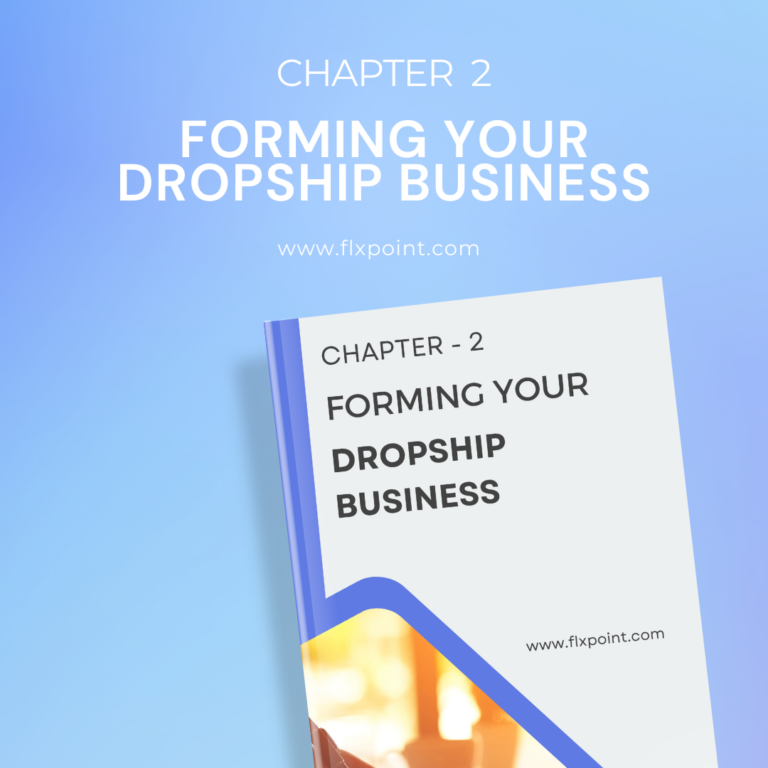
Get step-by-step guidance on building a strong foundation. From choosing your niche and validating your business idea to setting up your brand and making it legit—this chapter gives you the tools to confidently launch with clarity and purpose.

Struggling with product selection? Discover how to find winning products that sell. We cover techniques for identifying trends, analyzing competition, using supplier insights, and narrowing down product ideas that fit your niche and audience.
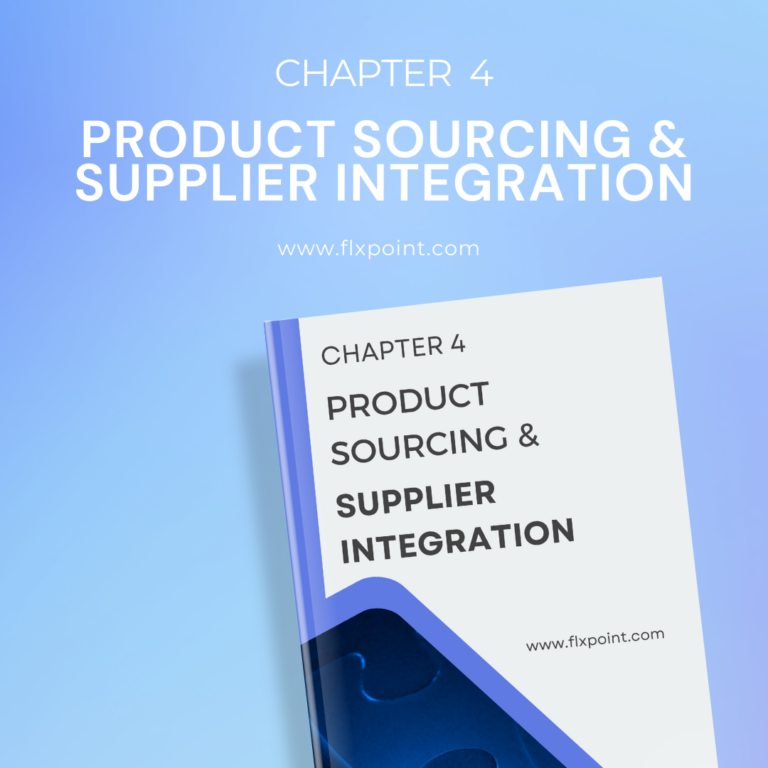
Not all suppliers are created equal. This chapter shows you how to source high-quality products and onboard suppliers the smart way. Learn how to vet vendors, avoid bad partnerships, and set up seamless integrations that keep your fulfillment running like clockwork.
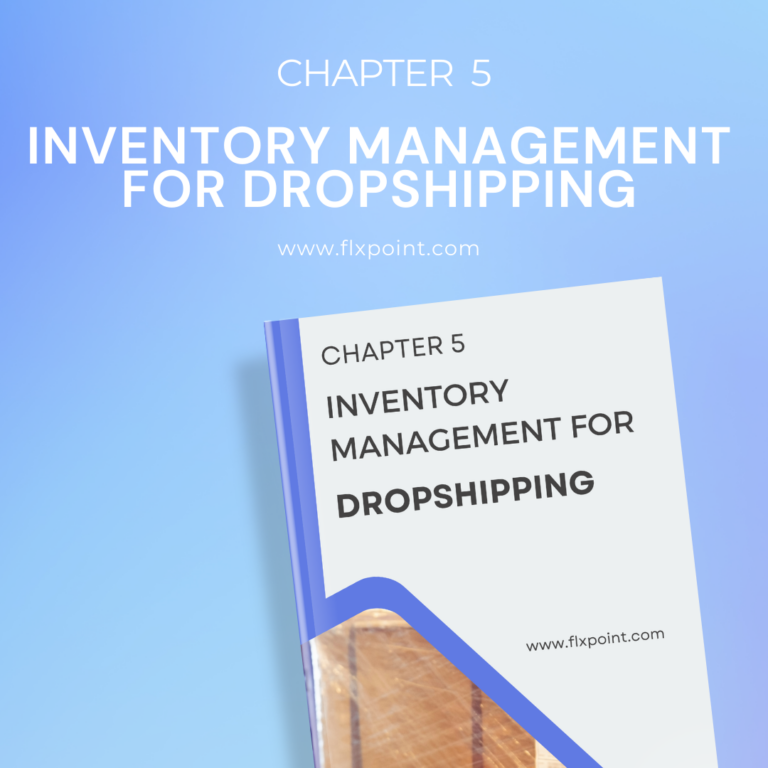
Say goodbye to stockouts and overselling. Learn how to keep your inventory accurate and your customers happy with real-time updates, smart syncing, and automated stock management across all your channels and vendors.
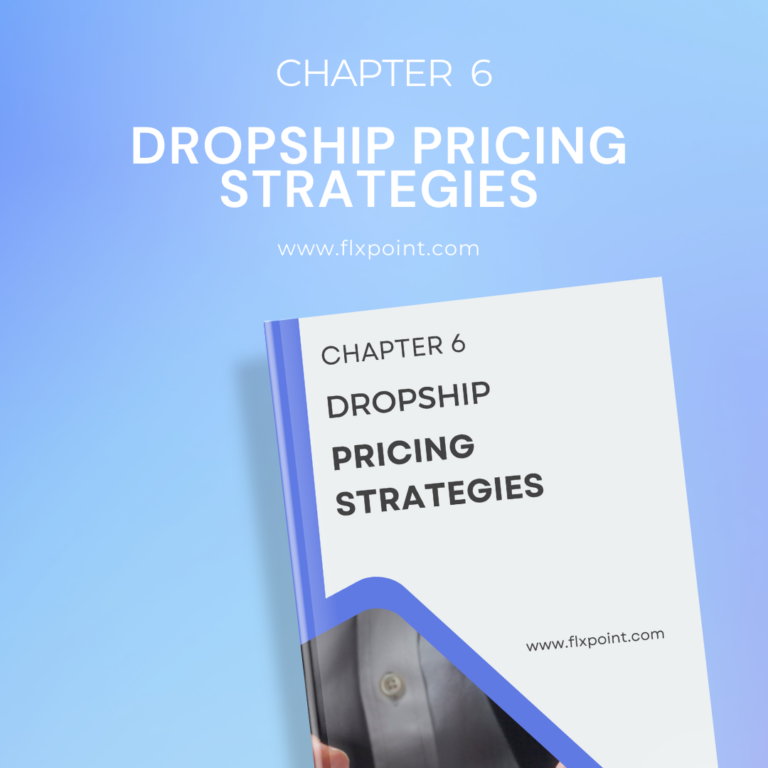
Pricing isn’t just numbers—it’s strategy. Dive into methods like cost-plus, value-based, and psychological pricing to find the sweet spot between profitability and competitiveness. You'll also learn how to handle MAP policies and dynamic pricing changes.

Manual processes holding you back? Discover how to automate your order routing, fulfillment, and vendor communication. Whether you’re dropshipping from a single source or juggling multiple suppliers, we’ll show you how to build a fulfillment engine that scales effortlessly.

The best of both worlds. Learn how to blend dropshipping with traditional wholesale to create a hybrid fulfillment model. Diversify your supply chain, increase margins, and reduce risk—all while maintaining flexibility and speed.

Protect your business (and your sanity). This chapter highlights red flags to watch for when sourcing suppliers, how to avoid fake vendors, and what to do if something seems off. Learn to build a trustworthy and secure supply chain from day one.

Tech made simple. Understand how using EDI and API integrations can automate communication with suppliers, speed up order processing, and reduce costly errors. Whether you're tech-savvy or not, this chapter makes complex systems feel doable.

Smart businesses run on data. Learn how to track key ecommerce metrics, monitor supplier performance, and analyze product performance to make confident, data-driven decisions that boost sales and efficiency.

Unlock time-saving workflows that work while you sleep. This chapter breaks down how to automate inventory syncing, order routing, vendor communication, and customer updates to run your business like a well-oiled machine.

Ready to expand beyond one platform? Learn how to integrate and manage listings, inventory, and orders across multiple sales channels—like Shopify, BigCommerce, Amazon, Walmart, and more—without doubling your workload or making costly mistakes.

When it’s time to grow, this chapter shows you how. From onboarding new suppliers and expanding product lines to optimizing your tech stack and improving operations, get a roadmap for scaling sustainably and profitably.
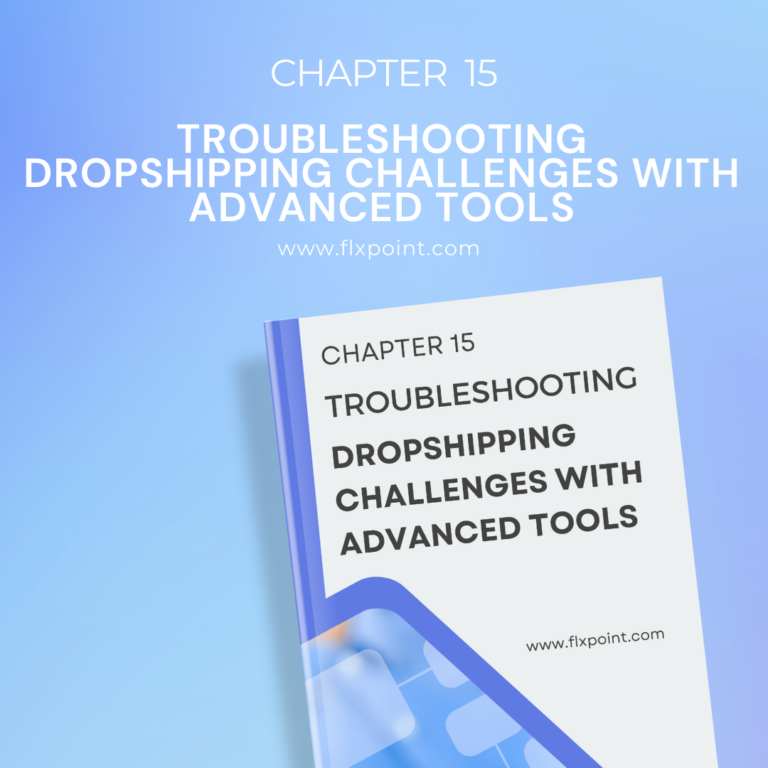
Every business runs into roadblocks—what matters is how you respond. Learn how to tackle issues like supplier delays, low inventory, and customer service hiccups using smart tools, real-time alerts, and proactive troubleshooting strategies.

What’s next for dropshipping? Explore emerging trends like AI-powered automation, predictive inventory, autonomous fulfillment, and more. Stay ahead of the curve and future-proof your business with the latest innovations.
Kenneth Cole's Smart Savings With Shopify EDI Connections
"They had never used Flxpoint before. But working with [the Flxpoint] team, they learned it and we're about to onboard our newest footwear partner, and you know that's big business for us.”
Mitul PatelKenneth Cole


How Flxpoint Helped Rifle Supply Automate & Grow
“I went line by line… whatever the inventory number was and cost value was, I calculated it and was blown away by how much that was worth— $300 million worth of product that I added to our web store.”
Chris MekdaraRifle Supply


The Ecommerce Automation Behind Screen Skinz
"Automation is the key to maximizing your volume. [Flxpoint] comes right into our flow — everything's automated. We want it to be quick and efficient. So that's what we love about Flxpoint."
Shaun Brown & Clay CanningScreenSkinz


How Inhaven Transformed Vendor Management with Flxpoint
"We ended up switching to Flxpoint, and it has been a much smoother process. Where it took us six months to get onboarded with the other company, we were up and running in a week or two with Flxpoint."
Ashley ChingInhaven


How Black Patch Performance Scaled Smarter with Flxpoint
"The only way to actually scale was to go through Flxpoint… You can’t even come close to hiring someone to do what Flxpoint does for the price."
Jonathan WilliamsBlack Patch Performance


